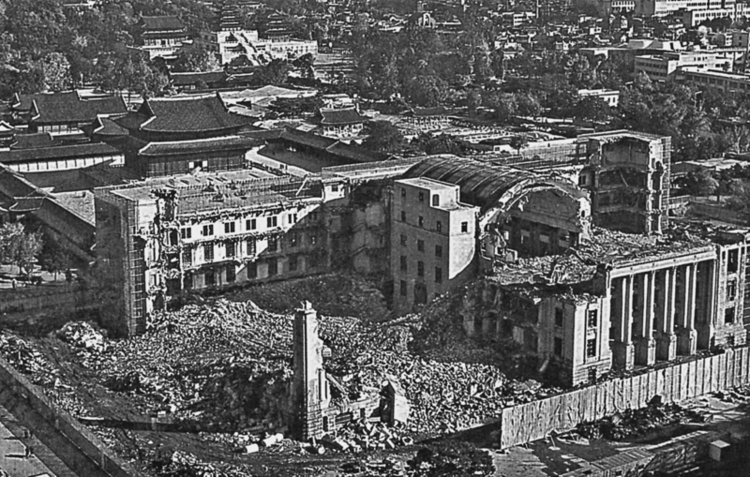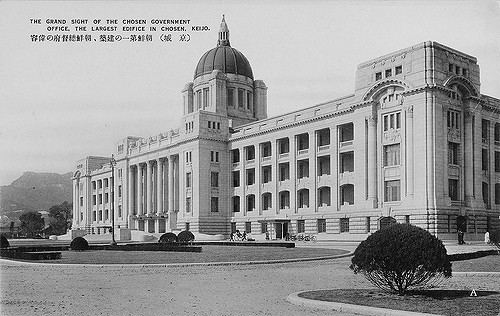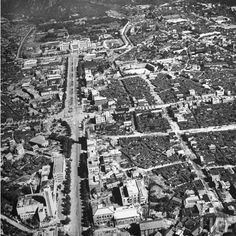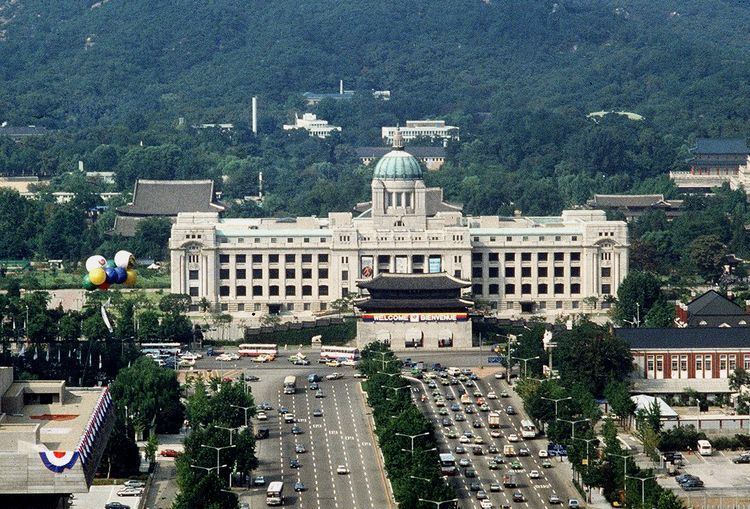Hangul 조선총독부 청사 Hangul 조선총독부 건물 Opened 1926 | Hanja 朝鮮總督府廳舍 Hanja 朝鮮總督府建物 | |
 | ||
McCune–Reischauer Chosŏn-ch'ongdokpu Ch'ŏngsa Similar Hangang Railway Bridge, Gyeongbokgung, Gwanghwamun, Korea National Assembly, National Museum of Korea | ||
The Government-General Building (1916-26), also known internationally as the "Seoul Capitol", was the chief administrative building in Keijo (English: Seoul) during Japanese rule in Korea and the seat of the Governor-General of Korea from 1926 until 1945. After independence the Neoclassical building was the scene of numerous important events for the South Korean government, housing first the South Korean National Assembly, and later the National Museum of South Korea. As it was long felt to be a symbol of Japanese imperialism, and it impeded reconstruction of the Gyeongbokgung complex landmarks, it was demolished during 1995 to 1996.
Contents

History

After the Korean Empire lost its sovereignty to Japan in 1910, Keijo (English: Seoul) was made the colonial capital of Colonial Korea. It was decided in 1911 to erect a building in Seoul to house the new colonial administration — the Government-General Building.
Location

The Government-General Building was deliberately constructed inside the grounds of the Gyeongbokgung Palace, the former Korean imperial palace, to obstruct the view of Gyeongbokgung from central Seoul and to legimitize Japanese colonial occupation and rule, and all but 10 of the 400 palace buildings were demolished; further demolitions were prevented only by a campaign by Japanese intellectual Muneyoshi Yanagi.
Architecture

The Neoclassical style Government-General Building was designed by German architect Georg De Lalande, and was completed in 1926. The new structure was a grey granite building with a copperplate dome. Architect De Lalande, who had lived in Japan since 1901 and had designed numerous administrative buildings there, died in 1914 and was succeeded on the project by Japanese architect Nomura Ichiro. Construction began on June 25, 1916 and the structure was officially opened ten years later.

The United States military received the Japanese surrender in Korea at the building. Later, in 1948, with the founding of the Republic of Korea, it served as South Korea's National Assembly until the present building was opened in 1975; President Syngman Rhee took the oath of office on its steps. In 1986, it became home to the National Museum.
Demolition
The future of the building was called into question after Kim Young-sam assumed the presidency in 1993. In August of that same year, he declared that the building would be demolished starting in 1995. This date was chosen to coincide with the 50th anniversary of the end of the Second World War and Japanese colonial rule, as well as the 600th anniversary of Gyeongbokgung. Concurrently, plans were unveiled for the construction of a new National Museum.
There was intense public debate on the issue, with Kim and other demolition proponents arguing that the building was a symbol of Japanese imperialism that had been built deliberately to deface Gyeongbokgung Palace. Opponents countered that South Korea, now a wealthy nation, was no longer troubled by such symbolism and that reminders of the colonial era were needed. Many opposed the move on the grounds of the expense incurred and the architectural merit of the existing building (other colonial-era buildings, such as the old Seoul Station and Seoul City Hall, are considered landmarks of the city).
A proposal was made to move the building to a new site, although this would have been far more expensive than demolition. Nevertheless, demolition began on South Korea's Liberation Day (Gwangbokjeol), August 15, 1995, with the removal of the dome. By late 1996, the building was completely removed.
Legacy
Today, the top of the dome and several other recognizable pieces of the building can be seen at the Independence Hall Museum in Cheonan, as part of a monument to commemorate the history behind the building and its demolition.
